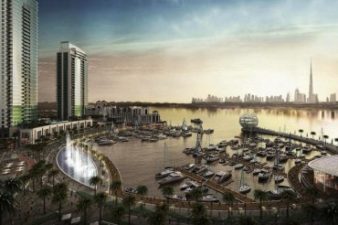 Though urban density is better for the environment, we don’t have to give up all the benefits of country living (such as locally-grown food)
Though urban density is better for the environment, we don’t have to give up all the benefits of country living (such as locally-grown food)
Though we laud the farmers who rough it on the land, grow food that we can buy, and live an interconnected life, city life is more sustainable. But not just any city life. Urban density that enables citizens to use public transportation and walk is necessary to maximize land use and minimize carbon output. Any system that leaves open even the slightest window of driving opportunity will compel people to use the car, which is not so great for air quality.
For cities in the UAE, for example,where only 1 in 25 Emiratis choose to walk, city planners can provide a little more incentive. Through his research, David Owen concluded that Manhattan offers a winning model; Jonathan Hiskes relays why.
“Seventy-seven percent of Manhattan households and 54 percent of New York City households don’t own even one car,” according to Owen. Compare this to a 1993 statistic, which is sure to have escalated since, that attributes 230 cars to every 1,000 Israelis.
New Yorkers are not car-free because of any kind of moral compulsion, but because cars are inconvenient to have in a city designed for public transportation and walking. University campuses are also designed so that students can walk from their dorms or apartments to anywhere they need to go without having to own a personal vehicle.
Israel is one country in the Middle East that has a decent bus and rail system, but any driver who has been stuck on the coastal road knows it’s not everyone’s mode of transportation. Owen is critical of what he calls “light density”:
There’s this sort of decorative public transit, but it’s not the way most people actually move around. To get to where transit does work, and to where it’s more energy efficient than driving, you really have to achieve pretty significant density. The threshold is something like seven households per acre, but that’s the absolute minimum.
To achieve this density, Owen recommends establishing a center, beefing it up so that it is as dense as possible, and then build radially from there.
“New York City is one of the very last places in the United States where walking is a primary mode of transportation for many people,” says Owen, who also suggests that urban density is favorable for the elderly.
When we lived in New York, there was an older lady in our building who lived independently until she died, because she could walk everywhere — the store, her doctor, the hospital, the movies. She could take cabs when she didn’t want to walk. Here in Connecticut, I play bridge with some old ladies, and all of them live in fear of the day when they lose their driver’s licenses, because if you live in the suburbs, without a car you can’t do anything by yourself.
Not only are dense urban centers better for air quality, but thanks to a mounting urban farming movement, we can still eat healthy, locally-grown food even if we are necessarily stuck in big hives of city people.
:: image courtesy of JacobEnos and story via Grist
More Urban News:




Tafline, I really enjoyed this article. I live in a city with the highest number of cars per capita in the country.